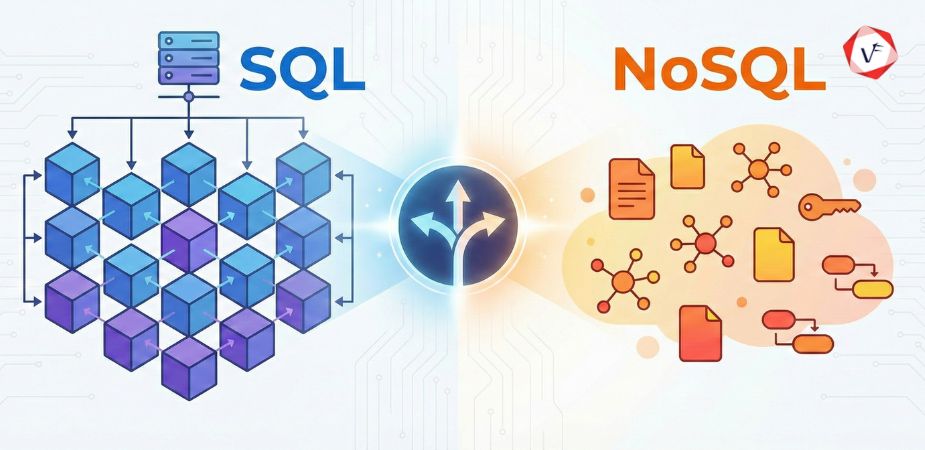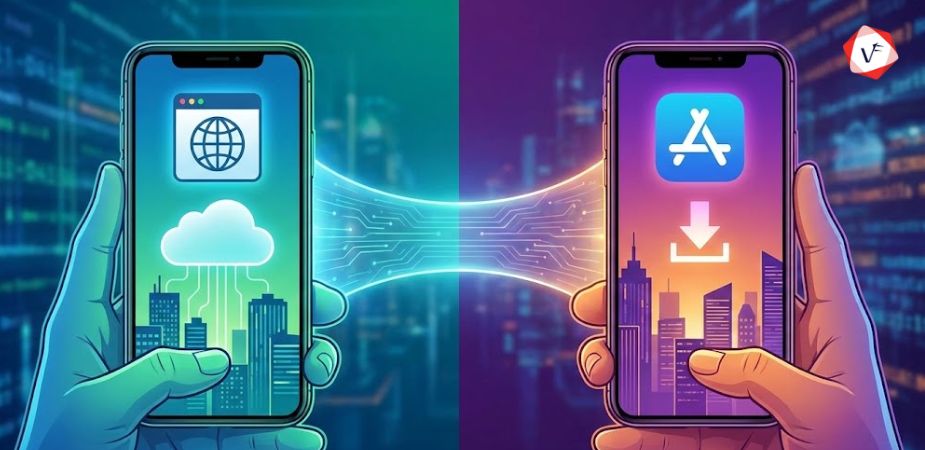- May 16, 2025 6:23 pm
- by Kevin
- May 16, 2025 6:23 pm
- by Aruthra

The .NET development ecosystem continues to evolve, offering developers powerful frameworks to build applications across web, desktop, cloud, mobile, and enterprise environments. As .NET matures in 2025, selecting the best .NET framework for a project is crucial for ensuring scalability, performance, and security.
In this article, we explore the best frameworks for .NET development in 2025, covering their key features, use cases, and benefits. Whether you're developing web applications, microservices, real-time systems, or cross-platform mobile apps, this guide will help you choose the right .NET framework for your needs.
ASP.NET Core remains a cornerstone framework for ASP .NET development in 2025, widely recognized for building modern, high-performance web applications. This open-source and cross-platform framework is optimized for speed, security, and scalability, making it an essential choice for businesses developing enterprise-grade applications.
One of ASP.NET Core’s biggest advantages is its modular architecture, which allows developers to use only the necessary components, leading to reduced memory consumption and improved performance. Additionally, its built-in support for asynchronous programming, dependency injection, and middleware pipelines enables developers to build efficient and maintainable applications.
With the rise of cloud-native development, ASP.NET Core has strengthened its integration with microservices architectures and containerization technologies like Docker and Kubernetes. The framework's seamless compatibility with Microsoft Azure allows businesses to deploy and scale their applications effortlessly. Furthermore, security remains a top priority, with improved authentication, authorization, and API security mechanisms available in .NET 9.
ASP.NET Core’s flexibility also makes it a preferred choice for building RESTful APIs, web services, and real-time applications using SignalR. Whether for small startups or large enterprises, ASP.NET Core is a versatile and future-proof framework that continues to dominate the .NET development landscape in 2025.
Blazor has revolutionized the way developers build interactive web applications by allowing them to use C# and .NET instead of JavaScript. In 2025, Blazor has cemented its position as one of the best frameworks for web development, thanks to its component-based architecture and seamless WebAssembly support.
Blazor eliminates the need for JavaScript-heavy front-end frameworks like Angular or React, enabling developers to build dynamic web applications with pure C# and Razor components. This approach allows for code reusability between the client and server, reducing development time and complexity. With Blazor Server and Blazor WebAssembly (WASM), developers have two powerful hosting models:
.NET MAUI (Multi-platform App UI) is the evolution of Xamarin.Forms, providing a unified framework for building cross-platform applications across Windows, macOS, iOS, and Android. In 2025, .NET MAUI has become the go-to framework for developers looking to write code once and deploy it everywhere, streamlining mobile and desktop application development.
One of the most significant advantages of .NET MAUI is its single-codebase approach, which eliminates the need to maintain separate code for different platforms. Developers can use C# and XAML to create stunning UIs while taking advantage of platform-specific capabilities through dependency injection and platform APIs. With hot reload support, developers can see changes in real-time, significantly improving productivity.
.NET MAUI in 2025 has received significant performance improvements, making it faster and more responsive than ever. With hardware acceleration, GPU optimizations, and native rendering, applications built with .NET MAUI deliver a smooth and high-quality user experience. Additionally, Microsoft has enhanced its integration with Blazor, enabling developers to use Blazor components inside MAUI applications, bridging the gap between web and mobile development.
Security remains a major focus for cross-platform development, and .NET MAUI provides built-in support for OAuth, OpenID Connect, and biometric authentication, ensuring that applications remain secure. Enterprises looking to create scalable, cross-platform applications benefit from .NET MAUI’s deep integration with cloud services like Azure App Services, Azure Functions, and Cosmos DB.
Whether building mobile applications, desktop software, or hybrid solutions, .NET MAUI stands as a powerful, flexible, and future-proof framework for .NET development in 2025.
As artificial intelligence and machine learning continue to drive innovation across industries, ML.NET will remain the premier machine learning framework for .NET developers in 2025. This open-source and cross-platform framework enables developers to integrate AI-powered features into their applications without requiring extensive knowledge of machine learning algorithms.
ML.NET provides an end-to-end machine learning pipeline, allowing developers to train, evaluate, and deploy custom ML models using C# and F#. Whether building applications for image classification, sentiment analysis, anomaly detection, or recommendation systems, ML.NET provides a vast set of pre-built models and tools.
Some of the key enhancements in ML.NET 2025 include:
OpenSilver has emerged as the leading alternative to Silverlight, enabling developers to build rich internet applications (RIAs) using C# and XAML. Unlike the now-defunct Silverlight, OpenSilver is built on modern web technologies like HTML5, CSS3, and WebAssembly, ensuring broad compatibility across all modern browsers without requiring additional plugins.
For businesses that still rely on legacy Silverlight applications, OpenSilver provides a seamless migration path, allowing them to modernize their existing applications without extensive rewrites. The framework ensures that .net developers can preserve their existing Silverlight codebase while benefiting from modern web standards.
In 2025, OpenSilver has introduced several new features, including:
By leveraging OpenSilver, businesses can extend the lifespan of their Silverlight applications while future-proofing them for modern web environments. With continued support and a growing developer community, OpenSilver is an essential framework for .NET developers in 2025 looking to modernize legacy applications.
Orleans is a framework for building distributed, high-scale applications, particularly suited for cloud environments. It simplifies the development of scalable and reliable applications by providing a straightforward programming model for building distributed systems. With the increasing demand for scalable cloud applications in 2025, Orleans offers a robust solution for developers aiming to build high-performance, distributed applications within the .NET ecosystem.
The Uno Platform enables developers to build single-codebase applications that run on Windows, iOS, Android, macOS, Linux, and WebAssembly. By leveraging UWP (Universal Windows Platform) and WinUI, developers can create rich user experiences across multiple platforms. The framework's support for XAML and C# allows for a seamless transition for developers familiar with the .NET ecosystem. In 2025, the Uno Platform stands as a compelling choice for cross-platform application development.
DotVVM is a framework for building web applications using the MVVM (Model-View-ViewModel) pattern with .NET. It allows developers to create rich web applications with less JavaScript, focusing instead on C# and HTML. The framework provides a set of controls and features that simplify the development of complex web applications. In 2025, DotVVM will continue to be a valuable tool for developers seeking to build maintainable and testable web applications within the .NET ecosystem.
NancyFX is a lightweight, low-ceremony framework for building HTTP-based services on .NET. It is known for its simplicity and ease of use, allowing developers to build web services and APIs with minimal configuration. Despite being lightweight, NancyFX is powerful and flexible, making it suitable for a variety of web application scenarios. In 2025, NancyFX remains a popular choice for developers looking for a straightforward framework for building web services.
ServiceStack is a framework for building high-performance web services in .NET. It provides a comprehensive set of features, including dependency injection, authentication, and serialization, to simplify the development of robust web services. The framework emphasizes performance and simplicity, making it a preferred choice for developers building scalable web services in 2025.
In conclusion, the .NET ecosystem in 2025 offers a diverse array of frameworks tailored to various application development needs. Whether you're building web applications, cross-platform mobile apps, or integrating machine learning models, there's a .NET framework designed to streamline your development process. For organizations seeking expert assistance in navigating this landscape, Vofox's offshore software development services provide a reliable and innovative option, ensuring your projects are executed with excellence. Get in touch with us.
Guaranteed Response within One Business Day!
Code Review Best Practices: Complete Guide for 2026

Database Selection Guide: SQL vs NoSQL
AI Agents in Enterprise Software: How Autonomous AI is Transforming Business Operations
Manufacturing 4.0: AI and IoT Transforming Production Lines

Progressive Web Apps vs Native Apps: Which Should You Choose in 2026?